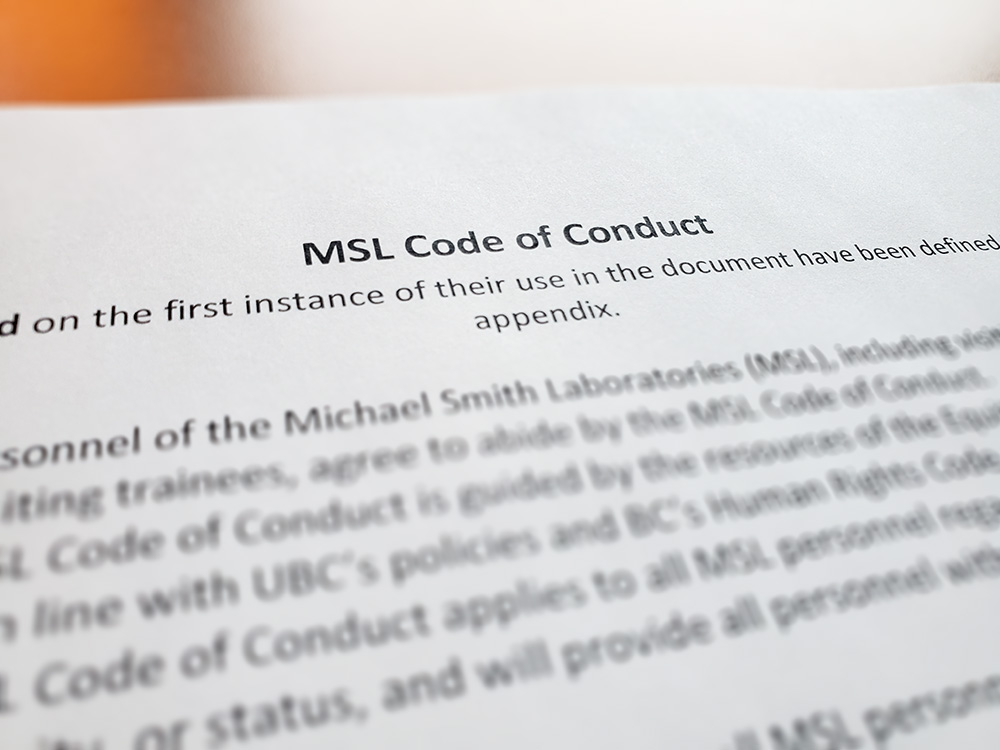EDI at the MSL
We respectfully acknowledge that the Michael Smith Laboratories (MSL) and the UBC Vancouver campus are situated within the traditional, ancestral and unceded territory of the xʷməθkʷəy̓əm (Musqueam).
MSL EDI Committee
The purpose of the MSL Equity, Diversity and Inclusion (EDI) Committee is to foster a safe, equitable, and inclusive environment for everyone in the department, where people feel seen, heard and respected.
As a committee, our goals include:
- Contributing to meaningful change that leads to a more just and accessible department.
- Delivering education and tools to empower people in their own EDI journeys.
- Providing direction and guidance to appropriate University resources.
- Valuing the importance and centering intersectionality*
*intersectionality definition:”The interconnected nature of social categorizations such as race, class, disability, sexual orientation, and gender identity as they apply to a given individual or group. Intersectional identities create overlapping and interdependent systems of discrimination or disadvantage.” (UBC’s Equity & Inclusion Office)
We recognize and celebrate the fact that we are a diverse community at the Michael Smith Laboratories. The EDI committee welcomes nominations (including self-nominations) of new members at any point in time.We believe every person brings a unique array of lived experiences which we are always grateful to witness and learn from. We are happy to listen to feedback and suggestions, as we believe in the importance of simultaneously educating and learning.
Feel free to explore the content and resources below:
- Familiarize yourself with our Code of Conduct
- Learn about the EDI related resources on campus at UBCV
- Check out EDI related events at the MSL
- Learn about Managing Health in University – an Open Doors Initiative
- Contact us via our Suggestion Box
2025 MSL Committee Members
Joerg Bohlmann (he/him), Faculty Rep
Emily Cooke (she/her), Staff Rep
Ayşe Nisan Erdoğan (she/her), Graduate Student Rep
Matthew Langley (he/him), Staff Rep
Marissa Lithopoulos (she/her), Postdoc Rep
Freda Miller (she/her), Faculty Rep
Dave Ng (he/him), Faculty Rep
Lucia Quesada-Ramirez (they/them), Staff Rep
William Stewart (he/him), Graduate Student Rep
Changqing Wang (he/him), Staff Rep
Ryan Wong (he/him), Graduate Student Rep

